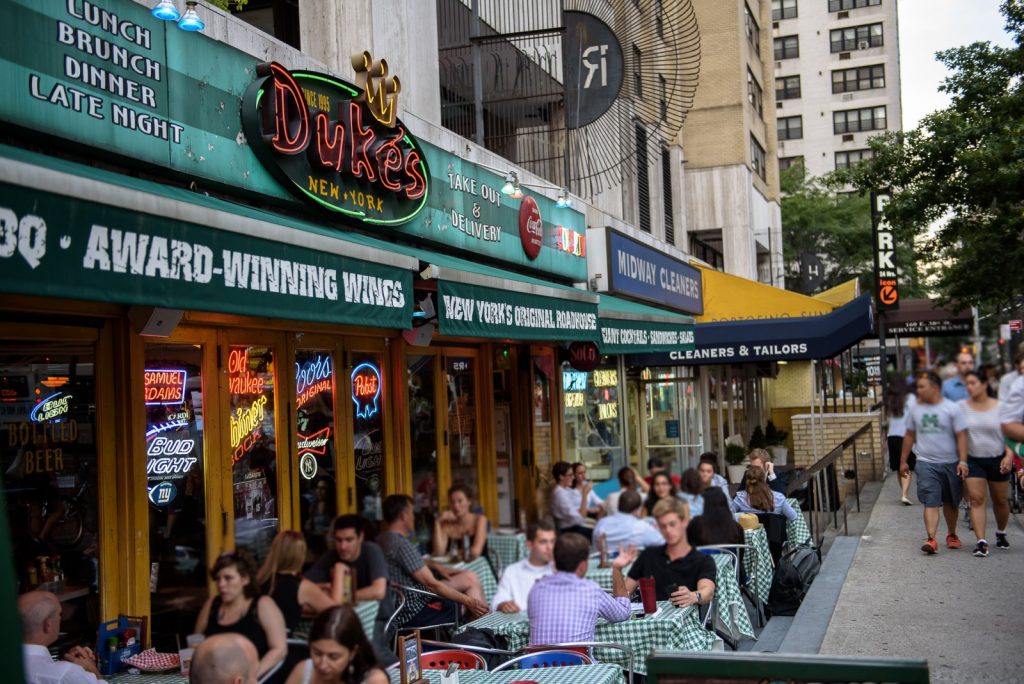
The Murray Hill Bro could be a dying breed.
Murray Hill and Kips Bay have long-standing reputations among 20-somethings as fresh-out-of-college bro-towns built on the salaries of finance majors and countless Jagerbombs. For that reason specifically, it was a neighborhood I avoided since moving to New York City. But, due to a series of unplanned events, I found myself packing up my apartment in the no-man’s land between Gowanus and Park Slope last year and moving to a neighborhood I never thought I would call home.
Bars, Pubs, and the Murray Hill Guys Who Love Them.
Murray Hill is probably best known for its sports bars along Third Avenue and the stereotypes that frequent them. I thought that walking down the street every day would be like walking down frat row. However, as I became more familiar with the area, the people I saw and interacted with on a daily basis were not those who were spilling out of bars on St. Patrick’s Day or SantaCon. The locals seemed to be primarily middle-aged couples, early-30s professionals, and scrubbed-up doctors and nurses.
The heart of the neighborhood
In hindsight, this shouldn’t have been a surprise if I had done my research. According to the U.S. Census, the median age of residents in the neighborhood is 39, and only 27 percent of rented apartments are occupied by people between the ages of 18 and 34.
Furthermore, the current median asking rent of the area, $3,500/month, is well above the city-wide median of $2,995/month, and significantly higher than the borough medians of $2,695/month in Brooklyn and $2,300/month in Queens.
Murray Hill simply is no longer affordable for recent graduates. Many recent grads, regardless of college major, are flocking to the outer boroughs in order to save on rent. It’s quite possible that neighborhoods like Bushwick and Astoria are seeing resulting upticks in their bro populations.
So the question arises, if the area is actually home to a more settled population, how does Murray Hill still have the reputation that it does?
Every Block Feels Like a Different Neighborhood
One answer to this question could be the mix of atmospheres in the area. In contrast to bars like Joshua Tree and Brother Jimmy’s, there are many places, such as Vanguard Wine Bar and Birch Coffee shop, that cater to a more established demographic. First Avenue is dominated by rows of hospitals, the U.N., and a few waterfront developments. Dover Street Market seems to be the hippest thing on Lexington. A few blocks in between Lexington and Park are townhouses and farm-to-table restaurants that look like they belong in Brooklyn Heights. This mix of contrasting vibes makes it nearly impossible for anything to change the face of the area to be more local and unique.
The carriage houses in Murray Hill dispel the bro set.
In Murray Hill, Convenience is King
What Murray Hill lacks in local, authentic flavor it makes up for in convenience. (Apparently, the convenience makes the area a great place to have a pied-a-terre if one is so lucky to be in the market for one). There’s plenty bars, grocery stores, and restaurants open around the clock, making errands and daily entertainment a no-stress task for residents. Need a last-minute mani-pedi? A suit to be pressed? The neighborhood is chock-a-block with nail salons and dry cleaners open at all hours. Additionally, since the neighborhood is located off the 6 train and within easy walking distance of Union Square and Grand Central, residents have plenty of ways to get around Manhattan and the outer boroughs.
Murray Hill is dense with dry cleaners
Admittedly, I now believe that Murray Hill gets a bit of a bad rap. It is true that there is no real quirk or New York edge to the area. However, day-to-day life and errands are a breeze. It’s this convenience that makes me wonder if it will become a go-to neighborhood for those who will leave the newer developments of Williamsburg once the L shuts down. Maybe that type of a migration could eventually shake up its reputation once and for all.
Related: